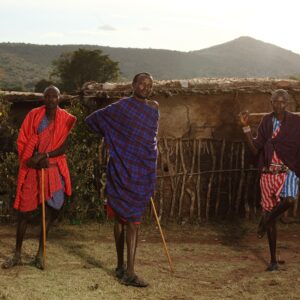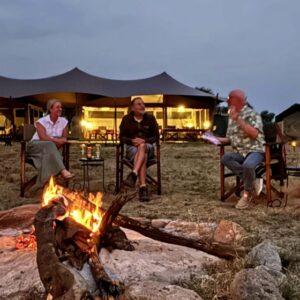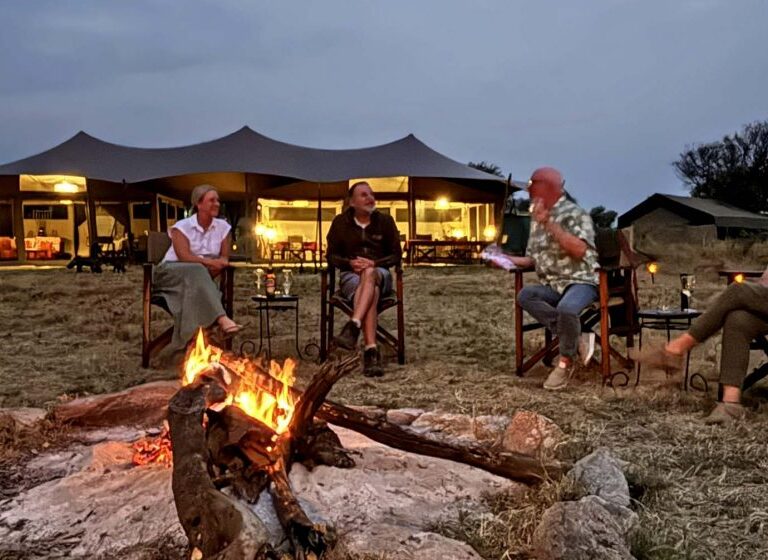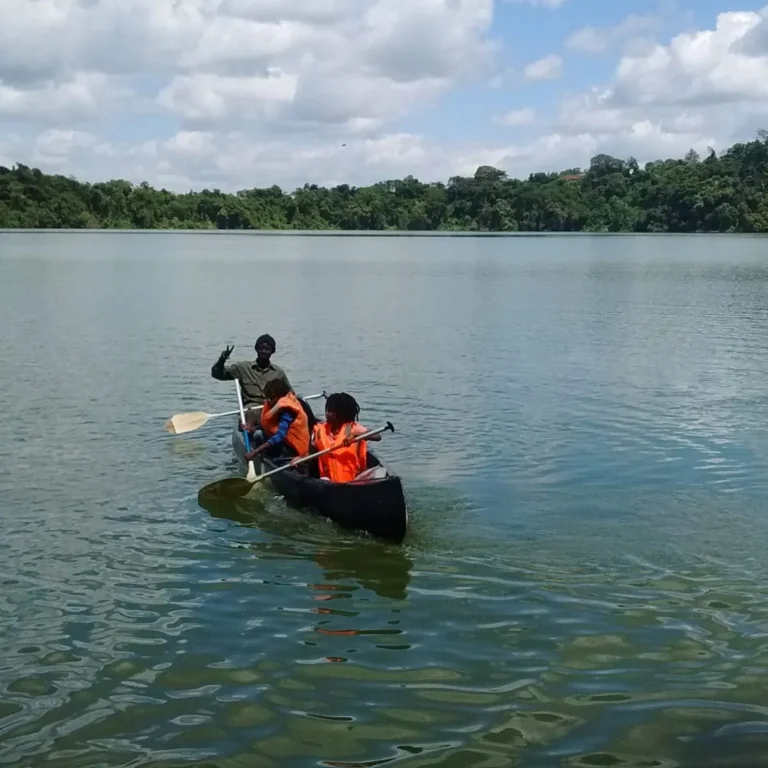East Africa, a land of vast savannahs, ancient volcanoes, and breathtaking landscapes, plays host to some of the planet’s most spectacular wildlife events: the great animal migrations. These epic journeys are a testament to the raw power of nature. A primal dance of life and survival that unfolds on a scale that defies imagination. While the Great Wildebeest Migration is the undisputed star of the show, there are other equally compelling migrations that offer a unique and unforgettable safari experience.
East Africa is renowned for its spectacular animal migrations, with the Great Wildebeest Migration being the most famous. This annual movement of over 1.5 million wildebeest, along with zebras and gazelles, between Tanzania’s Serengeti and Kenya’s Maasai Mara is a breathtaking spectacle. Other notable migrations include those of zebras, flamingos, and elephants. Here, we explore the top animal migrations to witness in East Africa, with a special mention of a remarkable spectacle just to the south.
1. The Great Wildebeest Migration: The Serengeti-Mara Epic
This is the one that tops every safari-goer’s bucket list, and for good reason. The Great Wildebeest Migration is a continuous, year-round cycle of over 1.5 million wildebeest greatest animal migration in Africa you shouldn’t miss, plus hundreds of thousands of zebras and gazelles, moving in a perpetual search for fresh grazing and water. It’s an epic journey, particularly at the Grumeti and Mara Rivers. Being a major highlight, that spans the Serengeti National Park in Tanzania and the Maasai Mara National Reserve in Kenya, a continuous flow of life and death Great Migration Africa map. The Cycle of Migration: The migration is a year-round event. But different stages occur in different locations.
Calving Season (January – March). The journey begins in the southern Serengeti and the Ngorongoro Conservation Area, where the short rains have produced a fresh flush of grass. This is the calving season, Iconic Animal Migrations in Africa, a time of new life, as over 500,000 wildebeest calves are born in a short window. The predators are ever-present, but the sheer numbers of newborns make it a feeding frenzy for lions, hyenas, and cheetahs.
The Trek North (April – June). As the rains subside and the grass turns to dust, the herds begin their long march north through the central and western Serengeti. This is a time of relentless movement, with the herds stretching for miles across the plains.
River Crossings (July – October). This is the most dramatic and iconic phase of the migration. The herds face the treacherous Grumeti and Mara rivers. Where giant Nile crocodiles lie in wait. The crossing is a chaotic, heart-stopping spectacle of courage, desperation, and sheer survival. The northern Serengeti and the Maasai Mara are the best places to witness this.
Arrival in the Maasai Mara (August – October). After the perilous crossings, the herds settle in the lush grasslands of the Maasai Mara, feasting on the rich pastures until the short rains in Tanzania beckon them south once again.
2. The Zebra Migration: The Striped Vanguard
Often overshadowed by their wildebeest cousins, zebras are an integral and equally impressive part of the Great Migration. They often lead the charge. Zebras must see animal migrations are more resilient to the coarser grasses and play a crucial role in “paving the way” for the wildebeest, eating the tougher, less palatable parts of the vegetation. Their migration is a synchronized, striped spectacle that precedes and follows the main wildebeest herds.
Why Zebras Are So Important:
Zebras are not just a beautiful backdrop; they are a vital component of the ecosystem. Their grazing habits allow the wildebeest to access the more nutritious parts of the grass, and their presence helps to deter predators. Providing a form of protection for the more vulnerable wildebeest. The sheer numbers of zebras in the migration create a mesmerizing visual spectacle. With black and white stripes stretching as far as the eye can see.
3. The Flamingo Migration: A Pink Spectacle
In the Rift Valley of East Africa, a different kind of migration takes place, one painted in vibrant shades of pink. Millions of lesser and greater flamingos move between the soda lakes of the region. Including Lake Natron, Lake Nakuru, and Lake Bogoria. These lakes are highly alkaline, providing the perfect breeding ground for the algae that the flamingos feed on. The migration is a continuous search for the perfect conditions, driven by water levels and food availability.
The Pink Flotilla:
The sight of millions of flamingos taking flight at once is nothing short of breathtaking. The sky turns into a swirling, living cloud of pink, and the lakes’ edges are transformed into a living carpet of feathers. The migration is not a single, synchronized event but a continuous movement between the lakes, offering a chance to witness this unique spectacle throughout the year.
4. The Elephant Migration: A Gentle Giant’s Journey
While not as dramatic as the wildebeest migration, the seasonal movement of elephants in East Africa is a powerful and significant event. In Amboseli National Park in Kenya, for example, massive elephant herds move between the swamps and the surrounding dry plains in search of water and food. The park’s iconic backdrop of Mount Kilimanjaro makes for a stunning visual, as herds of up to 100 elephants make their way across the landscape. In northern Tanzania, in the Tarangire-Manyara ecosystem, elephants undertake a similar migration during the dry season, moving from the drier, more arid areas to the permanent water sources of the Tarangire River.
Why Elephant Migrations Matter:
Elephant migrations are vital for the health of the ecosystem. As they move, they disperse seeds, create pathways, and maintain the open grasslands. Their presence is a sign of a healthy ecosystem, and witnessing a herd of these gentle giants on the move is a truly humbling experience.
5. The Bat Migration in Zambia: A Cave of a Million Wings
While not in East Africa, a mention must be made of this incredible natural phenomenon in Zambia. From October to December, over 10 million straw-colored fruit bats descend upon Kasanka National Park in Zambia. They fly in from the Congo, seeking out the fruit-laden trees of the park. The sheer number of bats is staggering, and at dusk, the sky is filled with a swirling vortex of wings as the bats emerge from the forest to feed.
A Unique and Unforgettable Spectacle:
This is a truly unique migration, a world away from the savannah plains of East Africa. The sound of their wings is a deafening roar, and the sight of the sky turning black with their numbers is an experience that will stay with you forever.
Why Animal Migrations Are the Ultimate Safari Experience
Animal migrations, particularly the Great Migration in East Africa. Offer an unparalleled safari experience due to their sheer scale, drama, and the diverse wildlife encounters they provide. Witnessing millions of animals on the move, facing predators, and navigating challenging terrains is a spectacle that few other wildlife events can match. Witnessing a migration is more than just a game drive; it’s an immersion into the raw, untamed heart of nature. It’s a front-row seat to the cycle of life and death, a living documentary of survival, resilience, and instinct. It’s a chance to see nature on a scale that is simply not possible anywhere else. Here’s why animal migrations are considered the ultimate safari experience:
Unprecedented Scale and Numbers. The Great Migration involves millions of wildebeest, zebras, gazelles, and other animals. Making it the largest terrestrial mammal migration on Earth. This massive movement of animals across the plains is a sight to behold.
Thrilling Predator Activity. The migration attracts numerous predators, such as lions, leopards, and crocodiles, making for exciting predator-prey interactions. The river crossings, in particular, are a focal point for intense predator activity.
Diverse Landscapes and Habitats. The migration traverses various landscapes, including grasslands, rivers, and woodlands. Providing a diverse range of habitats for the animals and offering a varied safari experience.
Unique Photographic Opportunities. The sheer number of animals, the dramatic river crossings, and the interactions with predators offer countless photographic opportunities. The early morning light also provides stunning silhouettes of zebras against the golden grasslands.
Emotional Connection to Nature. Witnessing the migration can be a deeply emotional experience, connecting individuals with the raw beauty and power of nature. It’s a reminder of the interconnectedness of life and the constant struggle for survival.
Planning and Flexibility. While the migration is predictable in its general pattern, the exact timing and location of the herds can vary. This requires flexibility and adaptability in planning a safari. Making the experience all the more rewarding.
More Than Just the Migration. A safari in the migration areas also offers opportunities to see other wildlife, explore iconic national parks like the Serengeti and Maasai Mara, and experience the culture of the region.
The Great Migration is more than just a wildlife event; it’s a journey through life, survival, and the raw beauty of nature. It’s an experience that leaves a lasting impression on those fortunate enough to witness it.
Why Does the Great Migration in Africa Occur?
The Great Migration is driven by a simple, primal need: food and water. The wildebeest and other herbivores are constantly following the rains and the fresh, nutritious grass that grows in their wake. Animals like wildebeest, zebras, and gazelles follow the rainfall patterns across the Serengeti-Mara ecosystem. It’s a continuous, circular search for sustenance, a journey dictated by the seasons and the availability of resources.
What You Didn’t Know About the Serengeti Great Migration
The Great Migration in the Serengeti is not just about wildebeest. It involves millions of animals, including zebras and gazelles, and it’s a year-round, circular movement, not just a one-way trip. The migration is dictated by rainfall patterns and the availability of fresh grazing and water. Leading to a predictable, yet dynamic, annual cycle. River crossings, particularly the Mara River, are a highlight, but other fascinating aspects include calving season and predator-prey interactions.
It’s a Year-Round Event. The migration is not a single event but a continuous cycle. There is no start or end point.
Multi-Species Movement. While wildebeest are the most numerous, the Great Migration also includes large numbers of zebras, gazelles, and other ungulates.
Year-Round Circular Migration. The migration is not a one-time event but a continuous, clockwise movement around the Serengeti and into the Masai Mara, driven by the search for food and water.
Not Just River Crossings. While river crossings, especially the Mara River, are dramatic, the migration encompasses a wide range of experiences, including calving season, mating rituals, and the constant interplay between predators and prey.
Predictable Timing. The timing of the migration is largely determined by rainfall patterns, making it possible to predict when certain parts of the migration will occur, though it can vary slightly each year.
Different Ways to Witness. You can experience the migration through various means, including hot air balloon rides, walking safaris, or even staying in mobile camps that move with the herds.
Predator-Prey Dynamics. The migration is a critical period for predators, as they follow the herds, making for intense predator-prey interactions.
Circle of Life. The migration showcases the circle of life, with thousands of animals dying from exhaustion, hunger, and predation, while thousands more are born, ensuring the continuation of the migration.
The Best Times and Places for a Luxury Migration Safari
The best time for a luxury migration safari depends on which part of the Great Migration you want to witness. The dramatic Mara River crossings, plan your trip for July to October in the northern Serengeti and Masai Mara. During calving season, visit the southern Serengeti between December and March. For a luxury safari, mobile camps that move with the migration are the best option. Offering a truly immersive and exclusive experience. These camps are strategically located to ensure you are always in the heart of the action, providing unparalleled access to this natural wonder. Luxury accommodations book up quickly, especially during peak season, so booking 12-18 months in advance is recommended.
River Crossings (July – October). The Maasai Mara in Kenya and the northern Serengeti in Tanzania are the best places to witness the iconic river crossings.
Calving Season (January – March). The southern Serengeti is the place to be, with a chance to see newborn calves and a high concentration of predators.
Serengeti (April – June). The central and western Serengeti offer excellent opportunities to witness the herds on the move. For a luxury safari, mobile camps that move with the migration are the best option, offering a truly immersive and exclusive experience. These camps are strategically located to ensure you are always in the heart of the action, providing unparalleled access to this natural wonder.
What Makes the Great Migration So Special?
Beyond the sheer scale and dramatic river crossings, the Great Migration is special because it is a vital ecological event that shapes the entire ecosystem. The grazing patterns of the wildebeest promote new plant growth, creating a healthier environment for all creatures. Their constant movement also scatters seeds, ensuring the continued diversity of plant life across the vast plains. It is a raw, real, and breathtaking performance that showcases the true spirit of the African wilderness.
Where To Witness the Great Migration in East Africa
The Great Migration in East Africa can be witnessed primarily in Serengeti National Park in Tanzania and Masai Mara National Reserve in Kenya. The migration involves millions of wildebeest, zebra, and other herbivores moving in a circular pattern between these two locations, following the rains and fresh grazing lands. The best places to witness the Great Migration are in the Serengeti National Park and the Ngorongoro Conservation Area in Tanzania, and the Maasai Mara National Reserve in Kenya.
Serengeti National Park. As the heart of the migration, the Serengeti offers year-round opportunities to witness the herds. From the calving season in the south (Ndutu plains) to the dramatic river crossings in the north, the Serengeti is the epicenter of the action. Ngorongoro Crater. While the herds don’t migrate into the crater itself, the southern Serengeti plains and the surrounding Ngorongoro Conservation Area are a crucial part of the migration cycle, particularly during the calving season. Maasai Mara. This is the best place to witness the herds from July to October, particularly the iconic Mara River crossings. The Mara’s lush grasslands provide a much-needed respite for the animals after their long journey.
- 10 Interesting Facts About the Great Wildebeest Migration
- When To Go On Your Great Migration Safari
- Tips for Planning Your Wildebeest Migration Safari
- What Will Be The Most Thrilling Event In Your Tanzania Safari?
- The Great Migration: What, When, and Where?
A Complete Guide to The Great Migration in Africa. The Great Migration is an annual movement of over a million wildebeest, along with zebras and gazelles, across the Serengeti and Masai Mara ecosystems in East Africa. This spectacular wildlife event is driven by the search for fresh grazing and water, following seasonal rainfall patterns. The migration is a continuous, year-round cycle, with no defined start or end, but it’s often described as a clockwise movement through the Serengeti in Tanzania and the Masai Mara in Kenya.
Final thought:
The animal migrations of East Africa are more than just a tourist attraction; they are a living, breathing testament to the power and resilience of the natural world. To witness them is to be humbled by the forces of nature and to gain a profound appreciation for the wild heart of our planet.








